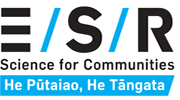Protecting our drinking water from potential microbial contamination is critical for regional councils. ESR scientists are working alongside GNS and Environment Canterbury on a new model for microbial risk assessment of land use on drinking water supplies.
The problem
Regional councils in Aotearoa New Zealand need a robust method to assist in making decisions about land use activities near water supply wells that could potentially impact the safety of the drinking water. Some land use activities within designated drinking water protection zones may require resource consent, and risk modelling can aid in determining whether consent is required and should be granted. The need for a defensible method for assessing a wide range of land use activities prompted the development of a new tool to model microbial risk to drinking water supply wells.
The solution
Groundwater modellers, hydrologists and microbiologists at ESR and GNS, along with Environment Canterbury (ECan), developed the Microbial Risk Assessment (MRA) tool(external link) to provide a more objective and transparent basis for consent decision-making on land use applications. This risk assessment tool involves modelling potential microbial contamination of groundwater supplies from land use activities such as community and on-site wastewater management systems, pastoral farming, wildfowl, stormwater systems, and animal effluent/manure application within ‘source protection zones’ – areas of protection around drinking water sources. The MRA tool includes a range of soil and groundwater system types found throughout Aotearoa New Zealand, modelling various permeabilities, topographies, recharge rates, hydraulic gradients, and lithologies. The tool also includes four climate types for modelling, representing relevant regions of the country.
This new MRA tool offers two significant improvements over the existing guidelines: improved inputs and improved risk modelling. The tool considers more input types, including additional land-use activities, multiple on-site wastewater management systems, and supply wells that are pumped at different rates. This improves the usefulness and application of the model as well as the risk model accuracy. In addition, the MRA also provides additional information and visualisation of uncertainty to assist in understanding trade-offs in risk with different separation distances and land use activities. Instead of evaluating at only a 95% confidence level, the entire spectrum of risks can be considered, from very risk averse setting at 99%, to more risk tolerant applications.
The MRA will benefit both land users and regional councils by providing greater guidance and certainty to stakeholders, reducing variation in assessment quality, assisting in consent processing, and avoiding duplication of effort in developing methods by individual regional councils.
The team is now building a user interface that will allow easy access and adoption of the MRA, assisting planners throughout Aotearoa New Zealand – and potentially beyond.
